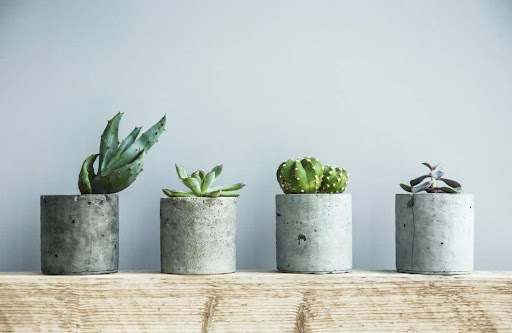Over the last ten years, succulents have become quite the rage, making their way into homes and workplaces as adored, low-maintenance plants. We are here to help you take care of these adorable creatures, which is rather simple. Let’s explore the basics of taking care of succulent plants online Dubai, from lighting and watering to the right soil for these adorable plants.
Getting To Know Succulents
The thick, meaty leaves of succulents are what distinguish them from other plant species and families. The Latin word “sucus,” which means juice, is where the term “succulent” originates.
Because of their high moisture content, succulents may go for extended periods of time without needing water. Some of them can go over a month without needing a sip!
Caring For Succulents: Light, Water, And More
While some succulents thrive outdoors in warmer climates, many folks prefer growing them as potted plants. If you plan to bring one of these little guys into your space, it’s essential to know how to look after them properly.
Choosing The Right Pot And Soil
First things first, these plants store lots of moisture in their leaves, so they don’t need a ton of water. But they absolutely need good drainage.
When picking a pot for your succulent, choose one just slightly larger than the base of the plant. If it’s too big, the soil might stay wet, making the succulent unhappy.
Ensure your pot has drainage holes if it doesn’t, drill some in or opt for a pot that already has them.
For the soil, go for a mix that drains well. Most garden centres have potting mixes specially made for cacti and succulents, which work perfectly. You can even create your own mix by blending equal parts sand, perlite, and peat moss.
Watering
These plants can handle dry spells and need soil that drains well. So, one of the biggest no-nos is overwatering. If the soil stays wet, the roots might rot, and your succulent could say goodbye.
You won’t need to water your succulent too often. Generally speaking, it occurs roughly every two to four weeks, depending on humidity, light, and temperature.
It’s time to water when your finger pierces the top two inches of earth. But if it’s still moist, hold off on watering.
When you do water, make sure to soak the soil until water runs out of the pot’s holes. If there’s excess water in the catch dish or plate, pour it out.
Light
While other houseplants like filtered or indirect light, succulents have different preferences. Most of these guys love bright, direct light, although some prefer partial shade.
So, a sunny spot next to a south or west-facing window suits most succulents. If you notice your plant’s colour fading or it stops growing, it might need more light. Try moving it to a brighter spot and see if that helps.
But be cautious; too much intense light can burn the leaves, making them crispy or discoloured. In that case, shift your plant to a place with less direct light.
Humidity And Temperature
Most succulents have a temperature between 65 to 85 degrees Fahrenheit, which is about what we keep in our homes. Keep an eye out for drafts because these plants aren’t fond of sudden temperature changes. So, keep them away from fireplaces, air vents, or exterior doors.
In terms of humidity, these plants are usually fine with average indoor humidity. But if it gets too humid, they might not be so happy. So, hold off on misting them or using a humidifier nearby.
Pests
Succulents, like other houseplants, can attract pesky bugs. The most common ones are small sap-sucking critters like spider mites, aphids, and thrips.
Move quickly if you see these creatures! To remove them, use a soapy cloth to wipe them off or a solution of insecticidal soap or neem oil.
Popular Succulent Types
It’s time to choose a succulent for yourself now that you understand how to take care of them! There is a huge variety of succulents available, offering plant collectors a plethora of alternatives and options.
Here are a few well-known ones that could appeal to you:
Aloe
The Aloe genus has more than 600 species, yet most people only think of the well-known Aloe vera when they hear the word “aloe.” They all have fleshy, triangular leaves arranged in rosettes.
Echeveria
With around 150 species and even more hybrid varieties, Echeverias form rosettes of fleshy leaves that look like beautiful flowers
Jade
The jade plant, scientifically known as Crassula ovata, is native to South Africa. It has a brown stem that sprouts fleshy, round, green leaves. As it grows older, it might look like a small tree with branching stems.
Whether you pick an aloe, echeveria, or jade, succulents are a wonderful addition to any space, bringing a touch of green and ease of care!
